LG QNED87T is a television that definitely stands out. It's a bit unconventional – it doesn't try to forcefully compete with top OLED models, but it makes up for it with modern features and user-friendly operation. It's equipment that works great for those who value comfort and versatility. The 120 Hz panel, VRR, and ALLM make the television perform well with dynamic content. Games run smoothly, the picture is sharp, and the responses are quick. If we spend time on a console, we will appreciate the lack of lag or blurring. When watching sports, quick actions are clear, without stutters. On a daily basis, LG QNED87T is simply comfortable. WebOS operates intuitively, apps launch quickly, and the Magic Remote control significantly eases operation. Voice control saves time, especially when searching for movies or series. Features like USB recording or Bluetooth provide more options, enhancing its versatility. The IPS panel is a big advantage regarding viewing angles. No matter where we sit in the room, the picture looks good. It's a great solution in larger spaces where not everyone has a direct view of the screen. Older films or standard television from built-in tuners also present quite well – the improvement in the quality of lower resolution materials works surprisingly well. However, there are certain things that can be eye-catching. The contrast is simply terrible. In dark scenes, there are no details at all. In the evening, in a darkened room, this is very noticeable. During the day, these imperfections are less felt, so LG QNED87T performs better in well-lit places. LG QNED87T is a television that has its strengths. It handles dynamic materials well, is easy to use, and is excellent for bright rooms. It's not the ideal model for evening viewings in darkness, but in everyday use, it definitely stands out. It's a universal device worth considering when choosing a new television.
- Matching (Score)
- Our verdict
- TV appearance
- Where to buy
- Contrast and black detail
- HDR effect quality
- Factory color reproduction
- Color reproduction after calibration
- Smoothness of tonal transitions
- Image scaling and smoothness of tonal transitions
- Blur and motion smoothness
- Console compatibility and gaming features
- Input lag
- Compatibility with PC
- Viewing angles
- TV efficiency during daytime
- Details about the matrix
- TV features
- Apps
- Playing files from USB
- Sound
LG QNED87T6B vs Hisense U7Q PRO
Direct compare
U7Q PRO / U78Q PRO


Panel type: LCD IPS
Resolution: 3840x2160
System: WebOS
Model year: 2024
Complete the survey to find out the result

Panel type: LCD VA
Resolution: 3840x2160
System: VIDAA
Model year: 2025
Complete the survey to find out the result

Overall rating
6.8
7.4
Movies and series in UHD quality
6.0
7.2
Classic TV, YouTube
6.1
7.1
Sports broadcasts (TV and apps)
7.2
6.7
Gaming on console
8.2
8.3
TV as a computer monitor
7.6
8.2
Watching in bright light
4.8
6.2
Utility functions
9.5
9.5
Apps
8.0
7.7
Sound quality
6.0
7.8
Complete the survey to find out what fits your preferences
Advantages
Fantastic for gamers and sport - 120hz, HDMI 2.1
Wide viewing angles
Good choice for regular TV - excellent digital processing and extensive user features
One of the better choices as a PC monitor
Remote with cursor - Magic
Excellent contrast and black - true Mini-LED backlighting with VA panel (65")
Very good motion fluency - 4K@165 Hz panel
Very high HDR brightness - even above 1500 nits
Perfect for gaming - Low input lag, VRR, ALLM, 4x HDMI 2.1, 288Hz at 1080p.
Vidaa operating system has many features like Airplay, USB recording
Outstanding quality of tonal transitions
Disadvantages
Tragic contrast
Missing Dolby Vision, HDR 10+
No support for HGiG
Average viewing angles
Missing apps on the VIDAA platform
Our verdict
The U7Q PRO is a TV that makes it clear within minutes: "speed is what matters here". Hisense has surprised us with how much they’ve packed into a device that doesn’t cost a fortune. A refresh rate of 165 Hz in 4K, and even 288 Hz in Full HD – not long ago, such figures were reserved exclusively for top-end gaming monitors. And here we have a mid-range TV with almost a full suite of features for gamers, confidently throwing down the gauntlet to much pricier competitors. But it doesn’t stop at speed. The U7Q PRO also boasts a very bright screen, peaking at an impressive 1500 nits. Like every Mini-LED, it has its typical "moods", occasionally exaggerating the image, but the overall visual effect remains very positive – especially in HDR content. It’s also worth mentioning the Vidaa operating system – fast, intuitive and equipped with features like AirPlay, a voice assistant, and a web browser. While it doesn’t offer the full range of apps found on Android, in everyday use the system performs exceptionally well. So, why is it “almost” perfect for gamers? It just lacks the HGiG feature, which allows for precise adjustment of brightness levels in HDR games. It’s a minor drawback, but it can be significant for console purists. Nevertheless, the U7Q PRO remains a very solid proposition – and a testament to the fact that Chinese manufacturers have not only caught up with competitors from Korea and Japan, but in some aspects have even begun to overtake them.
TV appearance





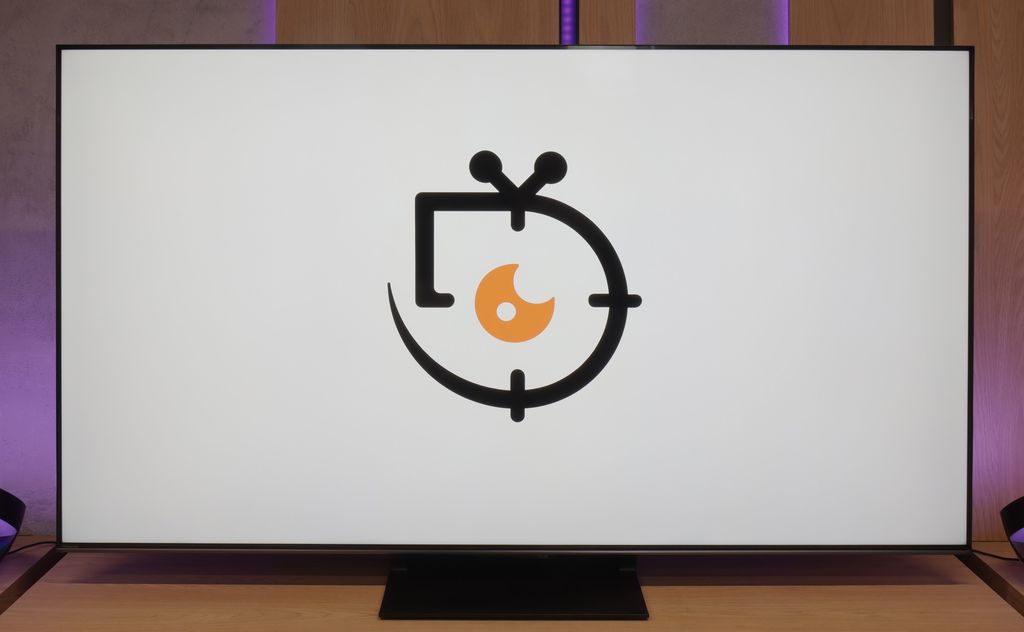
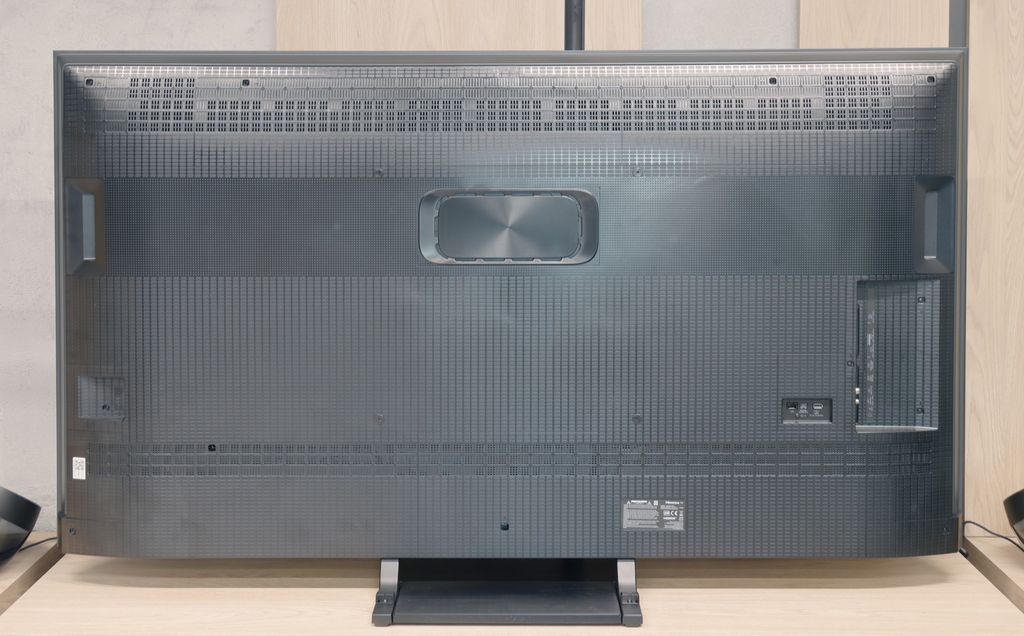
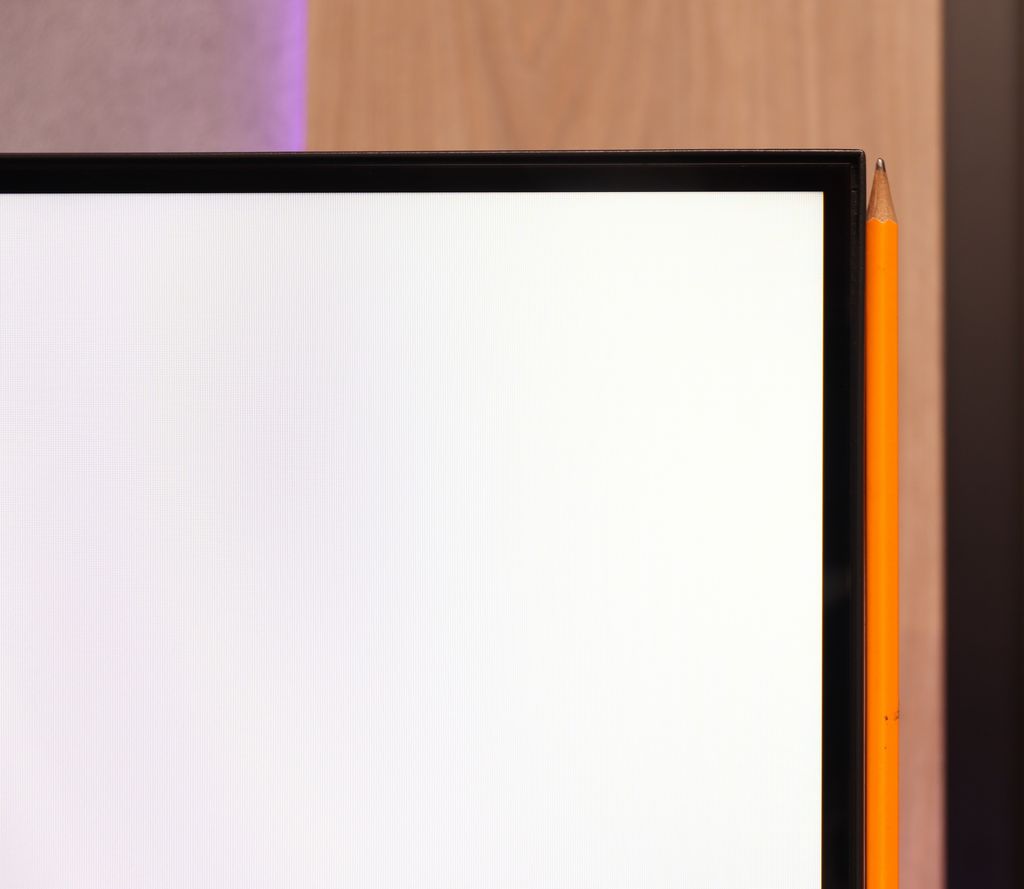

Contrast and black detail
3.3/10
8/10
Local dimming function: Yes, number of zones: 6 (6 x 1)
Local dimming function: Yes, number of zones: 560 (20 x 28)
Contrast:

Result
2,350:1

Result
1,250:1

Result
2,500:1

Result
1,450:1

Result
1,050:1

Result
340,000:1

Result
62,850:1

Result
42,000:1

Result
11,100:1

Result
7,500:1
Halo effect and black detail visibility:

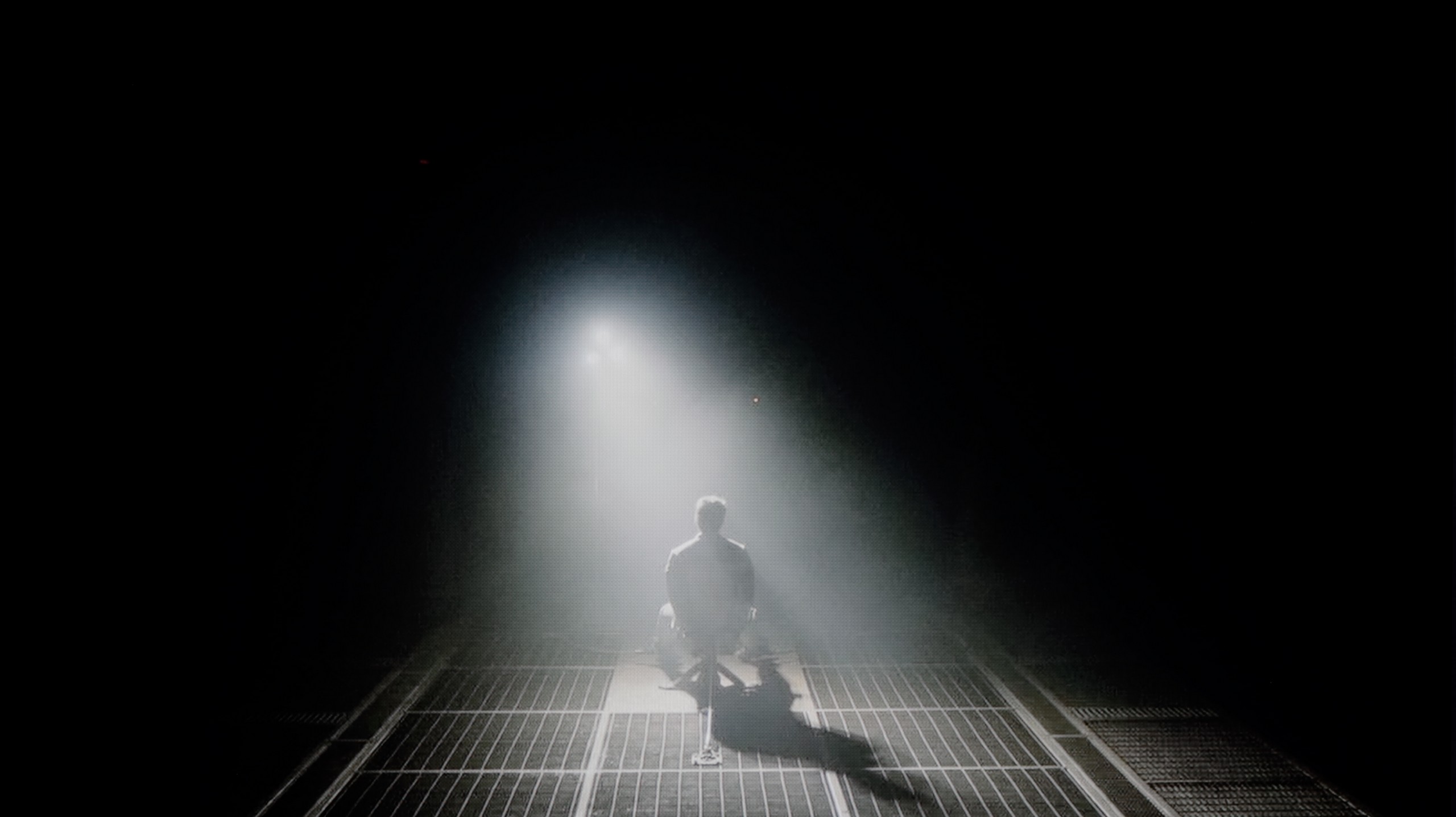
In the category of black levels and contrast, the television LG QNED87T6B faces some challenges. Equipped with an IPS panel, it doesn't match the VA panel models in terms of performance in this area. Additionally, edge-lit dimming affects its poor results in this category. It's worth mentioning that the exception is the 50-inch variant, which has a VA panel and is not subject to this test.
Despite the manufacturer offering a dimming control option, the effects remain relatively weak. Test patterns show that the contrast is really poor, and in the test clip from the film "Sicario 2," it's clear to see how the television struggles with the backlighting, illuminating a large portion of the screen from below. This indicates that in more demanding scenes, the television has difficulties maintaining an appropriate level of contrast and black levels, which negatively impacts the overall visual experience.
Hisense U7Q PRO is a mini-LED television with a VA panel and – in the version we tested, 65 inches – 560 local dimming zones. It's worth noting straight away that this number varies depending on the size – larger diagonals get more zones, while smaller ones get fewer accordingly. But regardless, the dimming system itself works really solidly here.
The contrast is genuinely very good for the price range in which this model is placed. In optimal conditions, the U7Q PRO can achieve results close to six-figure values, which until recently was reserved for much higher-end equipment. In practice – in scenes like the one from the film Oblivion – the picture looks stunning. With the lights on in the room, it's hard at first glance to distinguish this TV from organic screens. Of course, it’s still an LCD with local dimming, so compromises are unavoidable. In more challenging scenes, where there are many small light sources, the U7Q PRO tends to dim too aggressively. Instead of a slight degradation of black – some details that should be visible disappear. This is a side effect of the algorithm, which firmly adheres to the principle of “black should be black,” even at the expense of subtle elements in the picture.
But nonetheless – contrast is one of the stronger points of this model.
HDR effect quality
5.2/10
5.8/10
Luminance measurements in HDR:

Result
409 nit

Result
486 nit

Result
574 nit

Result
464 nit

Result
439 nit

Result
1129 nit

Result
323 nit

Result
721 nit

Result
267 nit

Result
736 nit
Scene from the movie “Pan” (about 2800 nits)

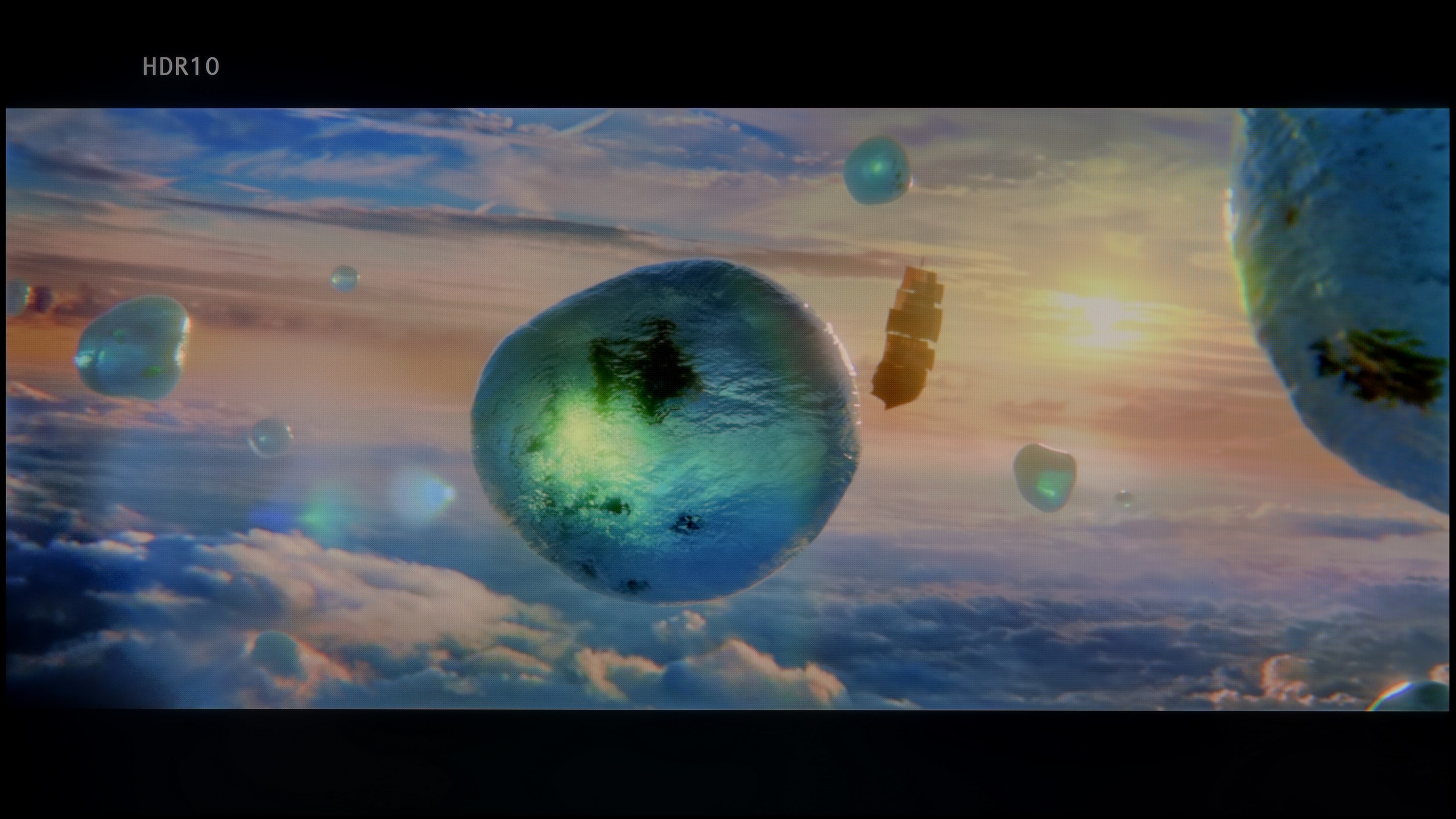
Scene from the movie “Billy Lynn” (about 1100 nits)


Static HDR10


HDR luminance chart:
Hisense U7Q PRO
Luminancja HDR
Luminance of RGB colors
LG QNED87T6B
Luminancja HDR
Luminance of RGB colors
LG QNED87T6B delivers truly decent visual experiences when it comes to HDR. During our tests on test patterns, the television achieved brightness close to 500 nits, which is a satisfactory result and allows for good visibility of details in high dynamic range scenes. Support for basic HDR formats such as HDR10 and HLG ensures proper image quality. Unfortunately, the television does not support more advanced standards such as Dolby Vision or HDR10+, which are particularly important at this screen brightness. The lack of support for dynamic metadata means that in certain scenes, the television may struggle to fully reproduce details, especially in very bright areas – this is precisely when dynamic metadata could significantly improve image quality. Nevertheless, it is worth noting the excellent coverage of the wide DCI-P3 colour gamut, reaching as much as 96.4%. As a result, the colours displayed by the QNED87T6B model are more vivid and natural, enhancing the quality of 4K content viewed with a wide colour palette.
U7Q PRO is truly a bright television. In synthetic tests, it achieved over 1500 nits, which is an outstanding result for this price bracket. Such brightness – at least in theory – allows it to display HDR content as intended by the creators, even in more demanding scenes with strong lighting. In practice, it performs very well, but not always perfectly. In bright scenes with large areas – like the test screen with intense sunlight from the film "Pan" – the U7Q PRO makes a huge impression. It can even dazzle with its light, which is definitely an advantage in the context of HDR content. Unfortunately, it doesn’t always manage to maintain this when there are many small bright details on a dark background. In such moments, the local dimming algorithms tend to dim some bright elements to maintain good blacks – and the side effect is that some details simply vanish from the frame. This is a classic compromise in mini-LED televisions – and the U7Q PRO is no exception. With such a large number of dimming zones, however, one could have hoped for a slightly more mature algorithm responsible for their control. Fortunately, the overall perception of HDR content is very positive. The U7Q PRO is not only bright but also colourful, thanks to the PFS LED (QLED) coating, the coverage of the DCI-P3 colour palette is at 95%, and BT.2020 around 73%.
Factory color reproduction
5.4/10
6.2/10


Factory Mode
After calibration


Factory Mode
After calibration
The colour accuracy in the LG QNED, even in Filmmaker Mode, which is the best factory setting, is not without its flaws. The main issue is white balance – we noticed that the level of blue on the graph tends to drop. This results in a shift in colours towards yellow, making the image have a warmer tone than it should. This deviation affects the naturalness of colour reproduction, especially in scenes with a white or neutral background. The Color Checker test confirmed that some colours are distorted and deviate from reality. Such distortion can make film scenes appear less realistic, and details are presented in incorrect colours, negatively impacting the overall image quality.
Regarding contrast, the gamma graph analysis showed significant drops, while the optimal value should be 2.4. This means that the television may display darker parts of the image brighter in some scenes, which reduces their depth and dynamics. Additionally, on the EOTF curve, which is responsible for brightness reproduction, an unnatural drop was noted at the beginning. This phenomenon can result in less accuracy in reproducing dark scenes, which in turn affects the overall image quality. The television may not convey full black depth, causing more demanding scenes to lose realism and detail. As a result, viewers may notice that details in the darker parts of the image become less distinct.
We tested the U7Q PRO in the best possible picture mode that this model offers – Filmmaker Mode. And indeed, this mode performs the best in terms of colour reproduction. But that doesn’t mean it’s perfect. In our test unit, both in SDR and HDR content, the image had a slightly cooler tone. The white balance was shifted towards blue, which made the overall image feel a bit "cooler." It may not be glaring, but it is definitely noticeable – particularly on white backgrounds, which instead of being neutral, seemed slightly bluish. Additionally – as we mentioned earlier – the television has a tendency to slightly brighten and oversaturate the image, which is also confirmed by the gamma and EOTF charts. All of this together means that without calibration, the image may appear somewhat unnatural – too cool, with slightly exaggerated dynamics. That’s why we decided to perform our own calibration – and you can see its effects and charts below.
Color reproduction after calibration
7.8/10
7.5/10

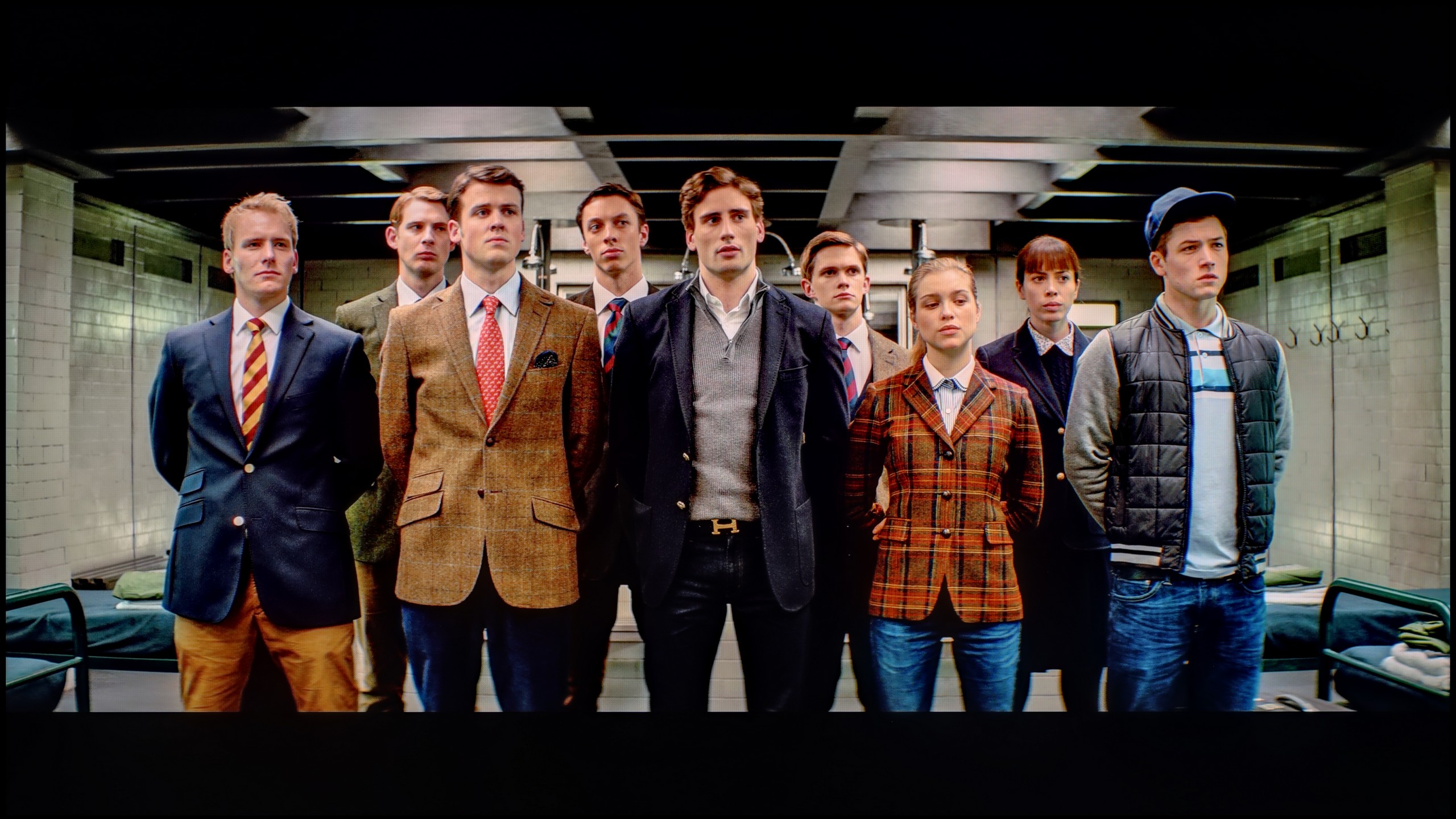

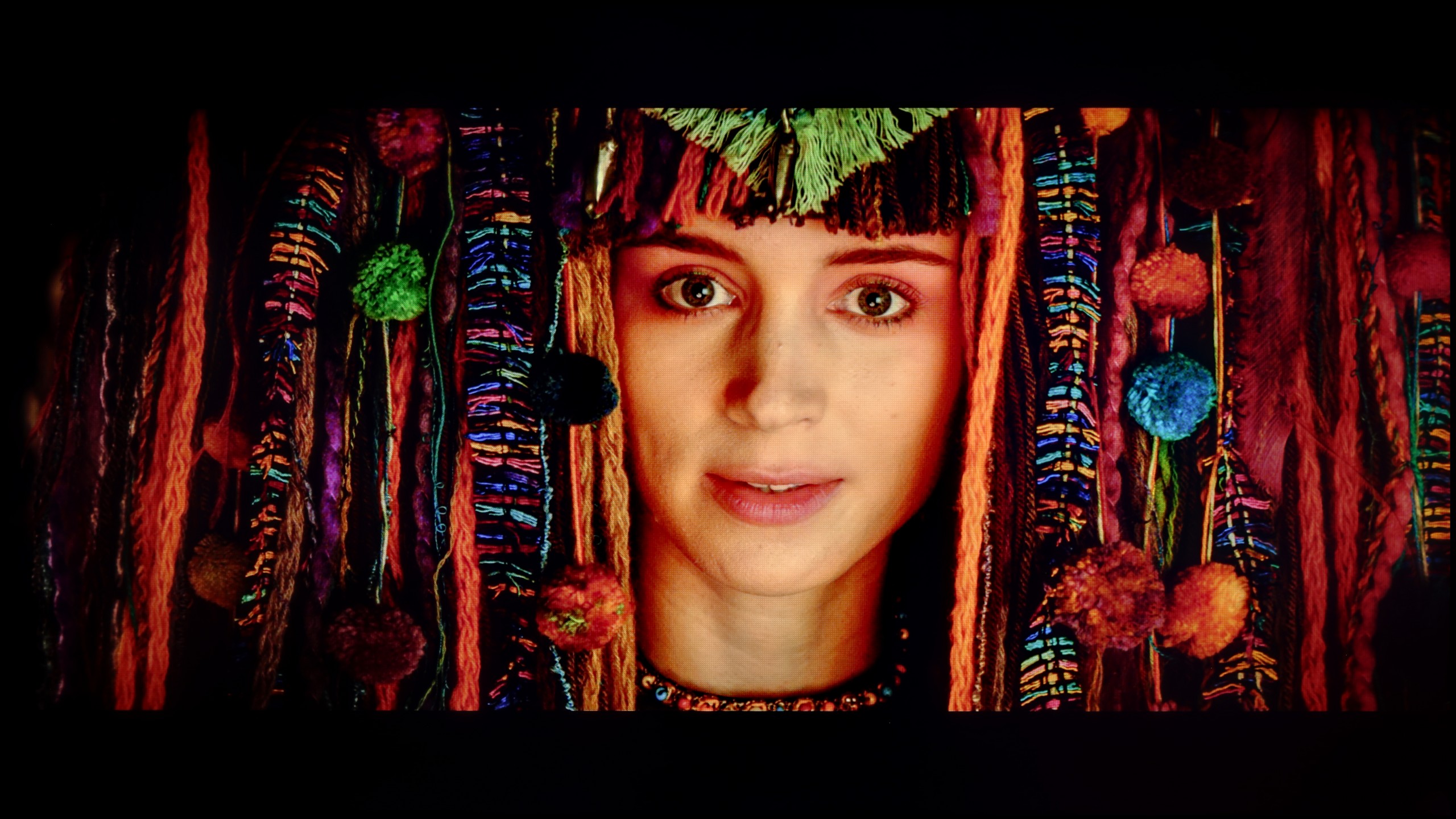
After calibration, the colours in SDR content look very good. The improved white balance translates to natural and harmonious shades in various scenes. Thanks to precise gamma tuning, details in shadows and bright areas of the image are accurately reproduced. The television performs excellently in everyday use, offering vibrant, well-balanced images and solid colour quality in HD. The biggest beneficiary here is also contrast. The gamma graph has been stripped of significant errors, giving the television a new dimension.
As for the white balance in 4K HDR, it has also been significantly improved. However, some errors still appear at the end of the graph. This may be due to the television's overly aggressive local dimming, which in some scenes affects the inaccurate reproduction of colours. It's difficult to talk about an improvement in brightness represented by the EOTF curve. The television, due to its construction limitations, has some drawbacks, and we can't overlook them. The Color Checker test confirms the issue with colour saturation – even though the television offers a wide colour palette, it fails to fully convey the director's intent.
Despite these shortcomings, the overall picture quality after calibration is significantly better than before. Adjustments in white balance and gamma tuning make the images more vivid and the colours closer to reality.
Thanks to calibration, we've managed to tame the white balance in SDR and HDR content. For SDR material, the effect is really quite good – the image becomes neutral, cohesive, and simply pleasant to watch. Everything looks the way it should.
HDR performs a bit worse. Although the white balance looks correct and overall the image gains naturalness, unfortunately, the delta E errors are still noticeable. Why? Because Hisense's U7Q PRO model does not give us full control over how the television manages brightness in HDR mode. And this is where the limitation arises. When we look at the EOTF curve for HDR content, it clearly shows what we mentioned earlier – at the beginning of the graph, there’s a noticeable drop, meaning the television darkens the smallest portions more than it should. On the other hand, those brightest elements can be overly bright. As a result, some details are lost, others are too aggressive, and overall control over brightness doesn't always align with what we’re trying to achieve during calibration.
Does the image look better after calibration? Definitely, yes, in terms of colour. But when it comes to brightness management in HDR, one must accept that the Hisense U7Q PRO will still do it in its own way.
Smoothness of tonal transitions
8.6/10
9.5/10

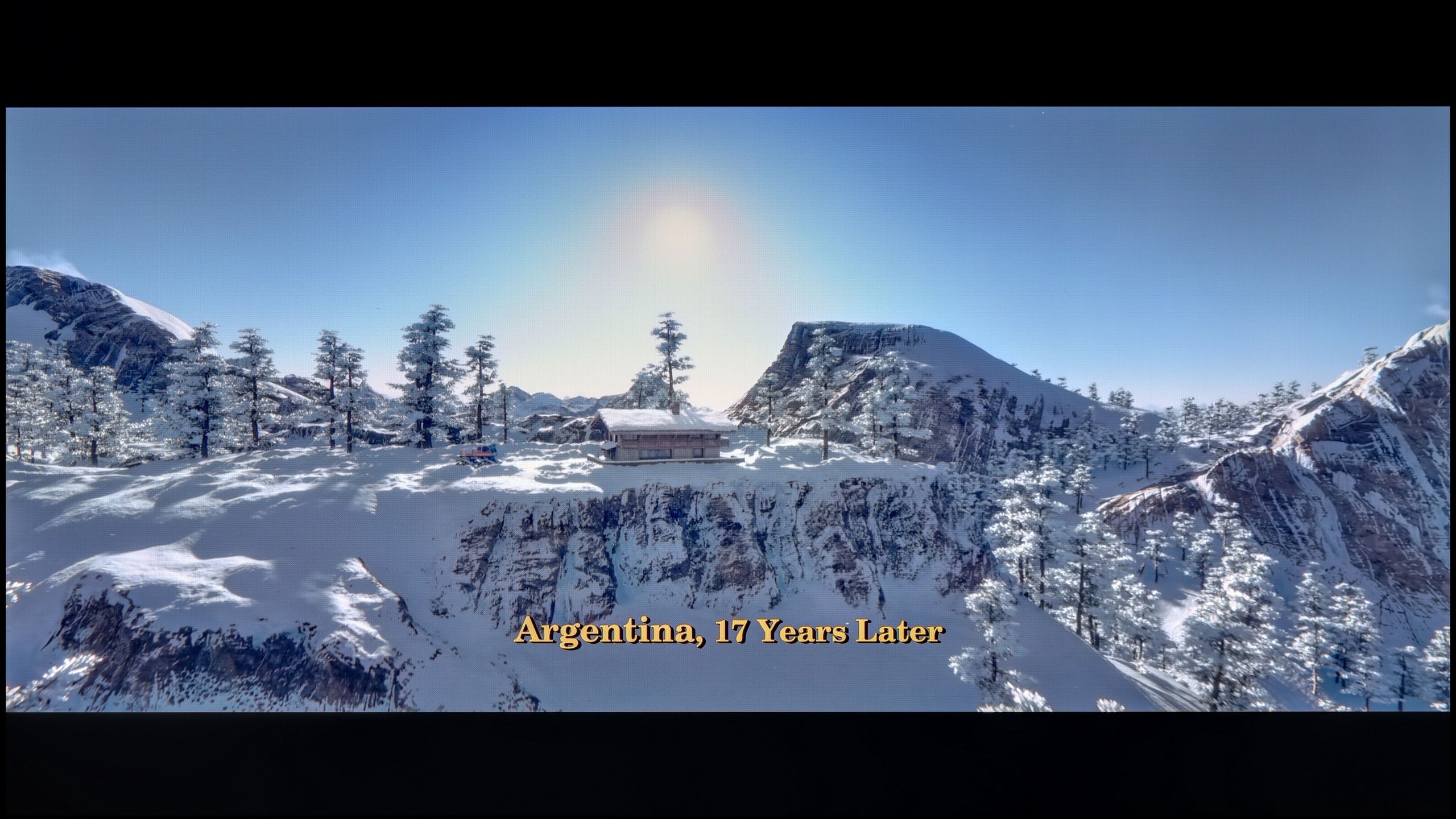





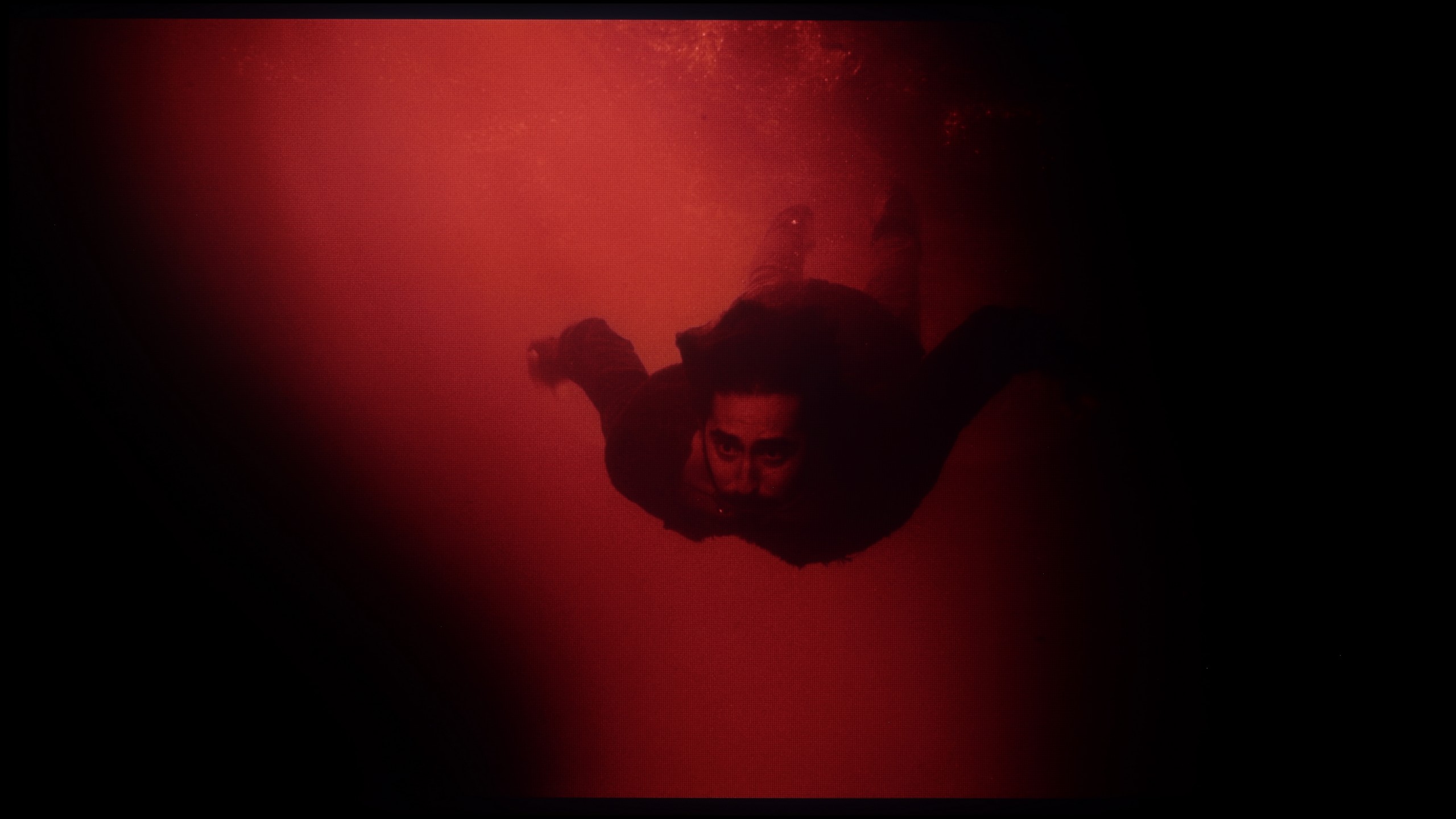




The gradation in LG QNED is quite good, despite minor issues on the colourful dark sky. These small drawbacks do not detract from the fact that the gradation is one of the positive aspects of this model. Overall, the television handles smooth colour transitions well.
The U7Q PRO handles tonal transitions really well. Colours blend smoothly, with no banding, stripes, or strange artefacts. Even in tougher scenes that typically expose any imperfections – there was nothing to criticise here. The picture simply looks clean. The gradients – both colour and grey – are fluid, nothing tears, nothing distracts. It's one of those elements you don't notice while watching… certainly not with the U7Q PRO.
Image scaling and smoothness of tonal transitions
8/10
7/10
Smooth transition function

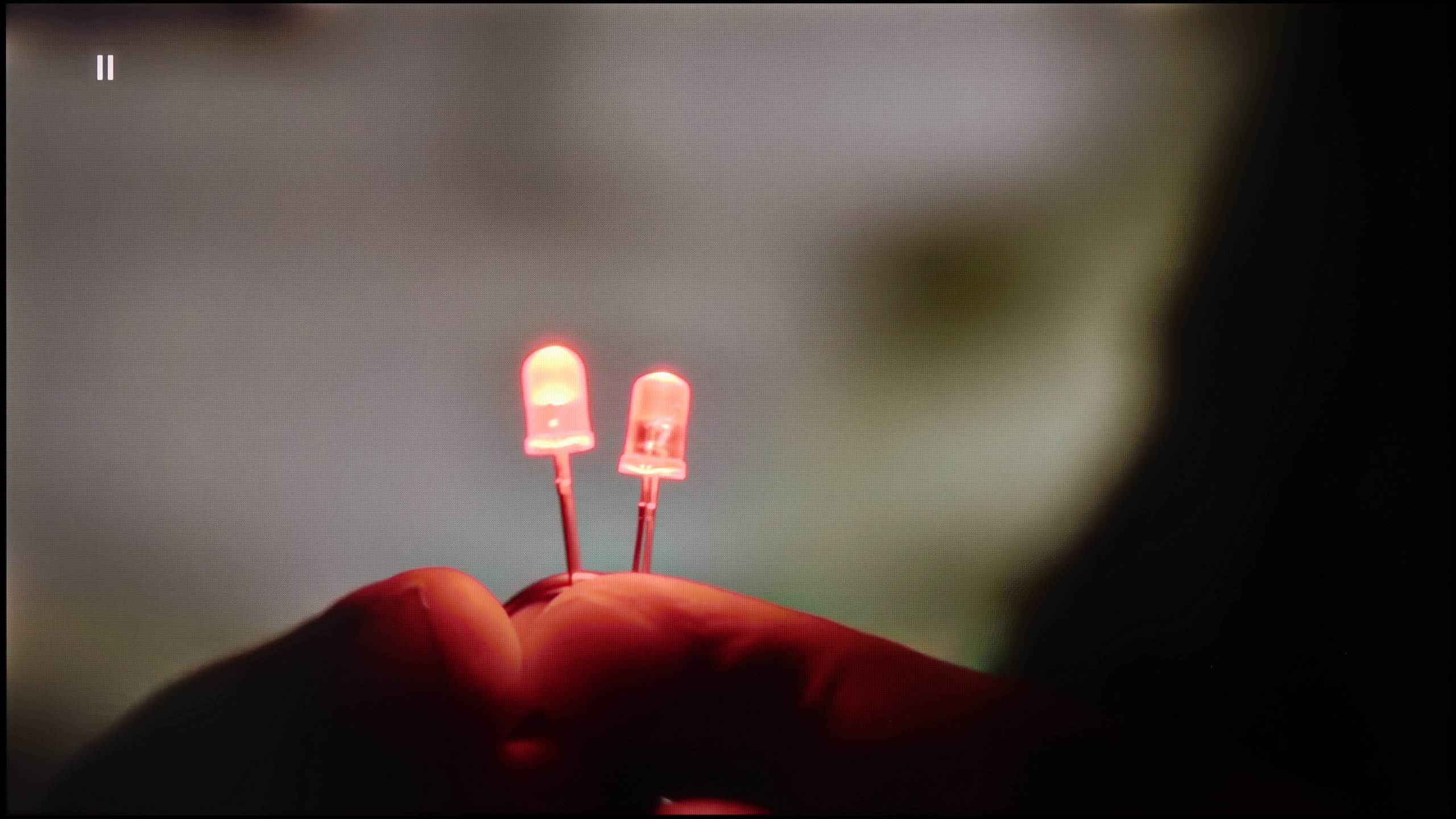
Image without overscan on the SD signal


When it comes to lower quality materials, the gradation looks really good. The feature called "Smooth Gradation" effectively smooths out the most problematic parts of the image, while not negatively affecting the film grain. For the best effect, it’s worth setting it to a low level. This solution significantly improves the quality of the displayed content, making the viewing of lower resolution materials more enjoyable and smoother.
In terms of digital processing, the image is displayed without cropping, known as overscan. Although slight fraying of the branches can be noticed against the model's background, everything looks very good. Users should be satisfied with the image quality when watching low-quality materials like standard television. The TV handles this task exceptionally well, providing a satisfying visual experience, even with lower quality content.
If someone happens to come across older materials where the banding issue arises – Hisense has a solution for that. In the U7Q PRO, we find a feature called "Smooth and Gradient Picture". Set to the "Medium" level, it works really well – eliminating most gradient problems without smoothing the entire image like a blur in Photoshop. 😉 Film grain remains, details don't disappear – that's exactly how it should work. Well done on the implementation!
As for scaling weaker materials, it's simply good. It's not at the level of the most expensive TVs with advanced upscaling, but older content looks good. There is some minor banding at very low resolutions, but that's perfectly normal and hard to avoid. On the plus side – even with the oldest materials, there is no overscan effect, the image isn't cropped or artificially stretched.
Blur and motion smoothness
7.8/10
7.5/10

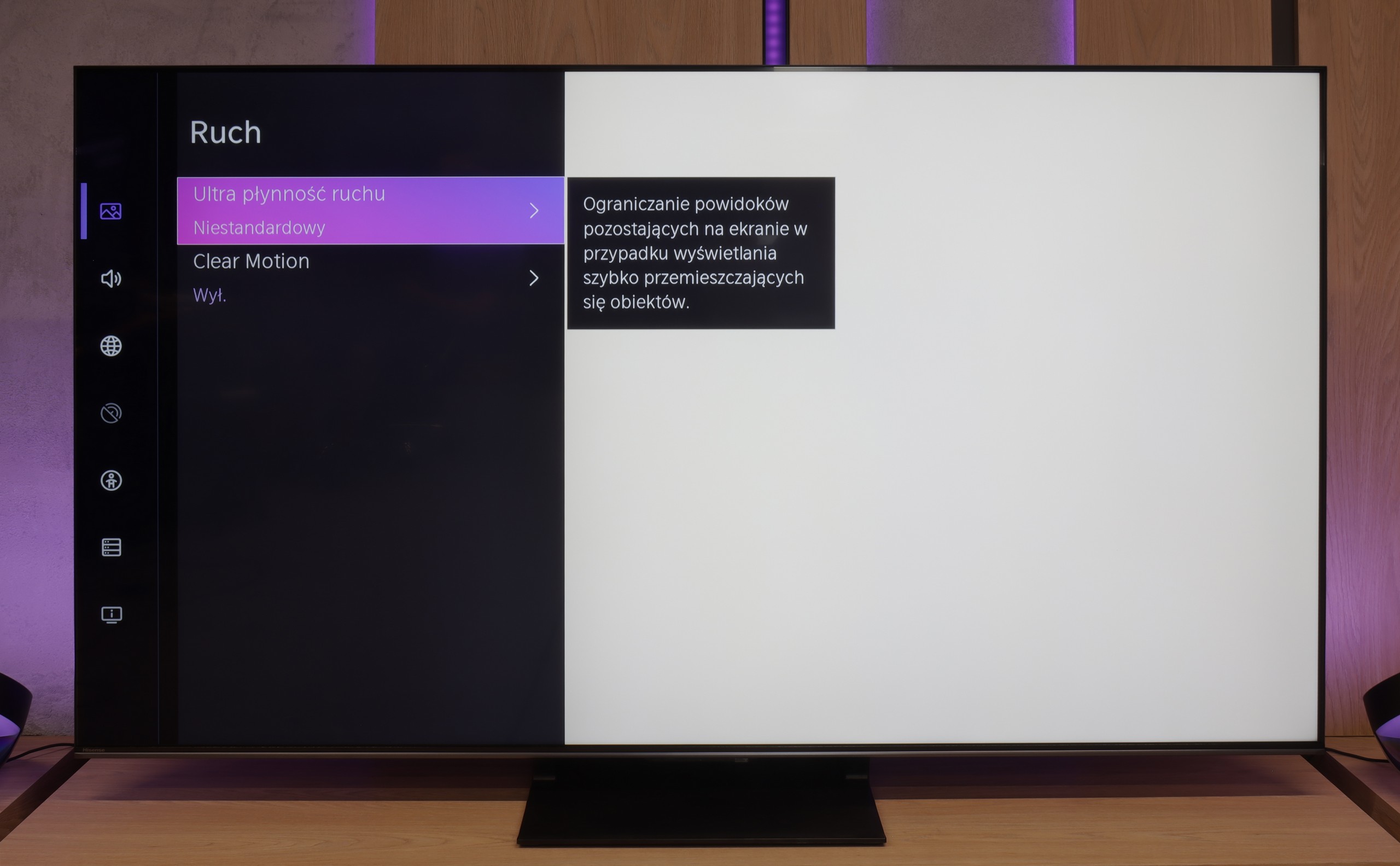
Blur (native resolution, maximum refresh rate):



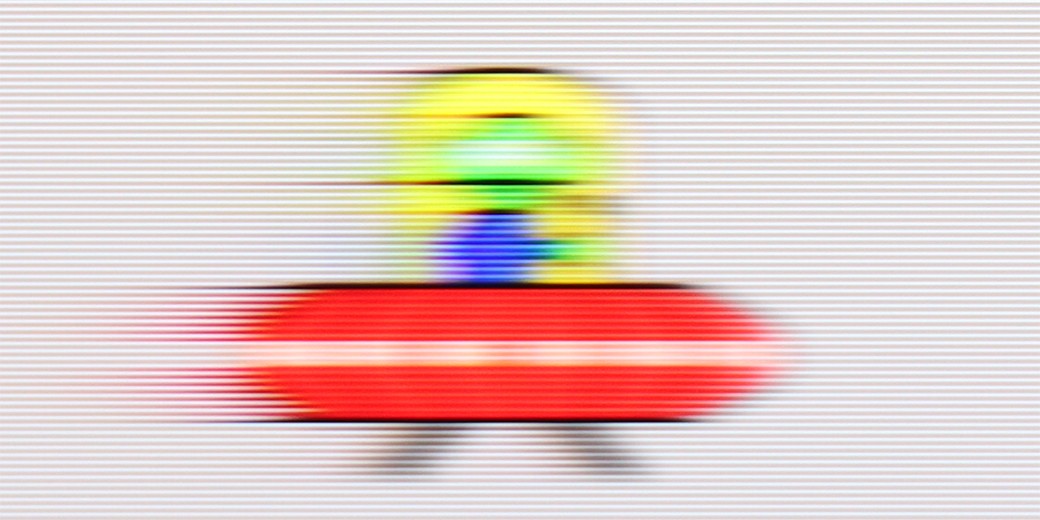
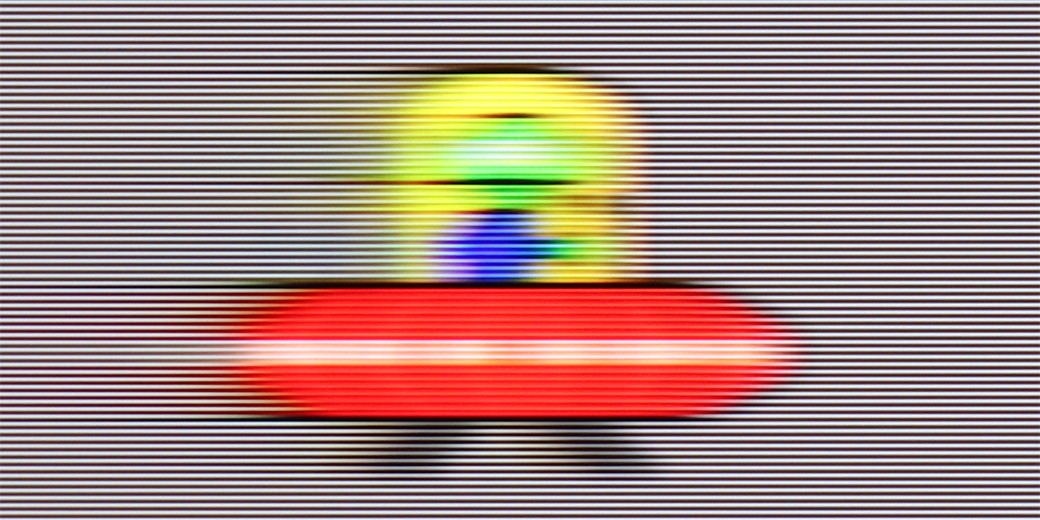
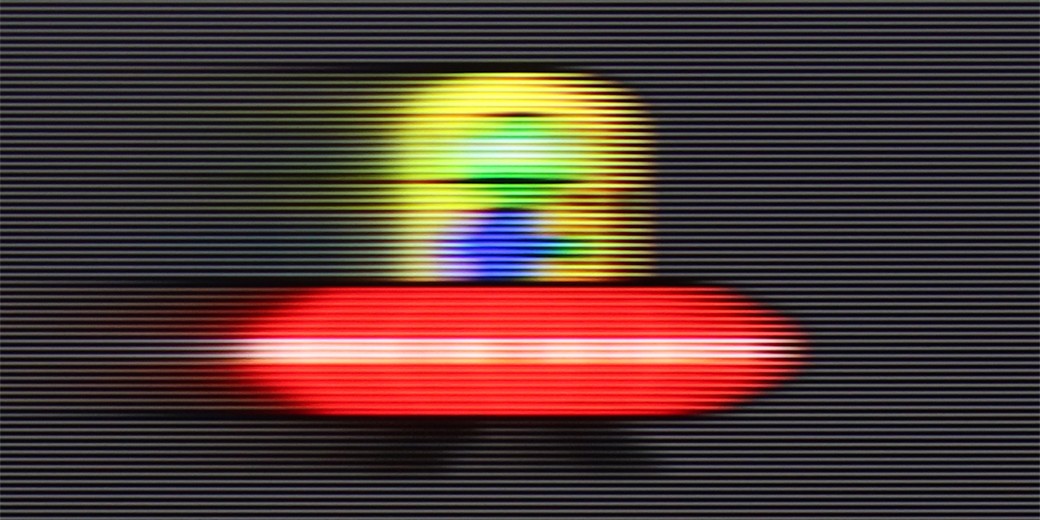
Blur (BFI function enabled):






Smużenie ():
Smużenie (1080p 288Hz):

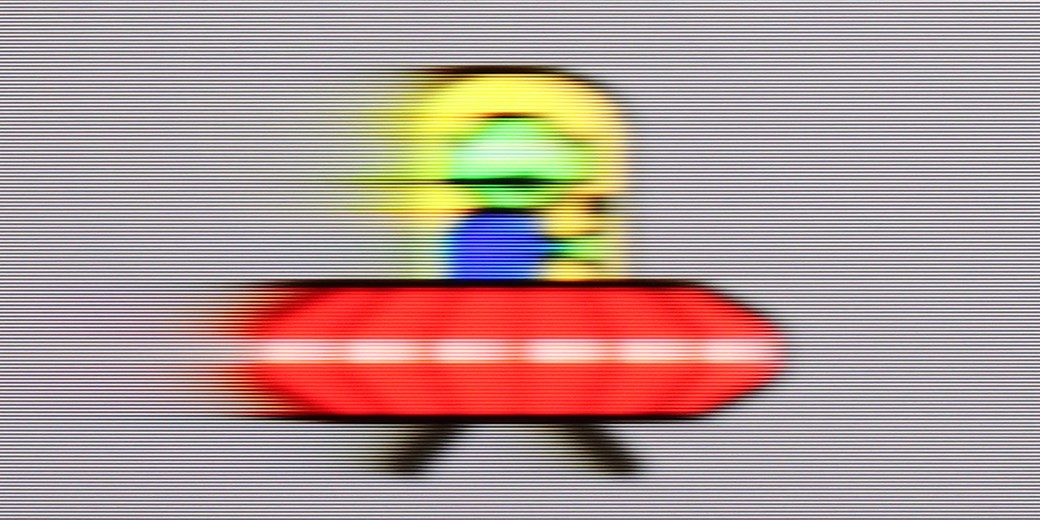
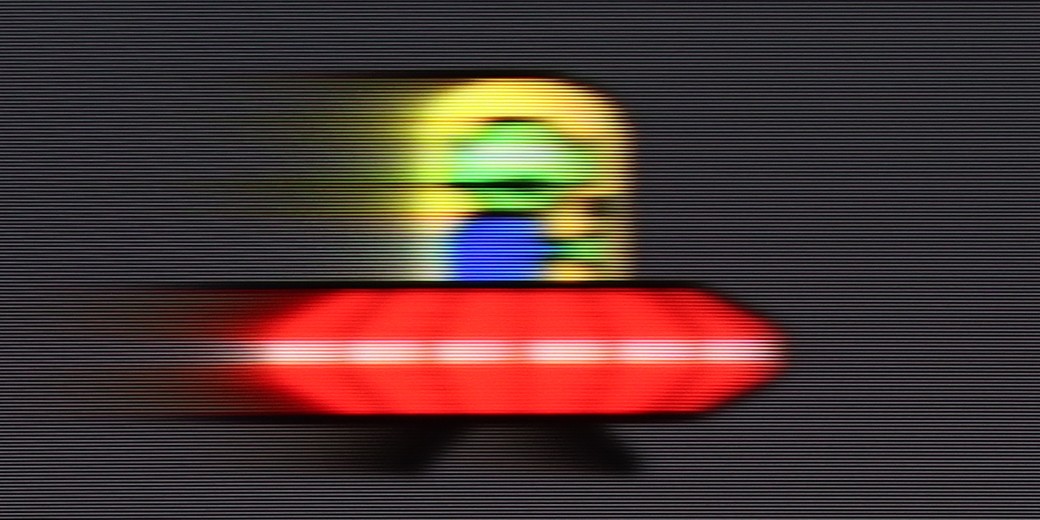
The television provides decent smoothness when watching movies, thanks to the “Tru Motion” feature, which allows adjustment of motion smoothing from 0 to 10. De-Judder regulates motion smoothness, while De-Blur adjusts motion sharpness. Users have the option to choose between a traditional cinematic effect with subtle juddering motion (lower settings) and a smoother, theatrical image. Although the latter deviates slightly from the cinematic standard, it may be appealing to many viewers.
As for gamers and sports fans, the LG QNED87 television with a 120Hz panel will surely not disappoint. And with the use of an IPS panel, the response time is typically better than that of VA panels available at a similar price. This ensures smoother gameplay and dynamic experiences when watching sports events.
“Speed” – this word was most frequently mentioned during our tests of the U7Q PRO. The television is equipped with a 165 Hz panel, which in itself is impressive – especially considering we’re talking about a mid-range model. Of course, PC gamers will benefit the most from its full capabilities, but even during everyday viewing, it’s clear that this is a fast and efficient panel. Like most modern televisions, the U7Q PRO can also enhance the smoothness of films that were originally recorded at 24 frames. In the menu, we find a slider that allows us to adjust the effect to our own preferences – from a more cinematic feel, with subtle motion, to a stronger smoothing with the characteristic “soap opera effect.”
Console compatibility and gaming features
9.2/10
8.5/10
- ALLM
- VRR
- VRR range48 - 120Hz48 - 288Hz
- Dolby Vision Game Mode
- Correct implementation of HGIG
- 1080p@120Hz
- 1440p@120Hz
- 4K@120Hz
- Game bar

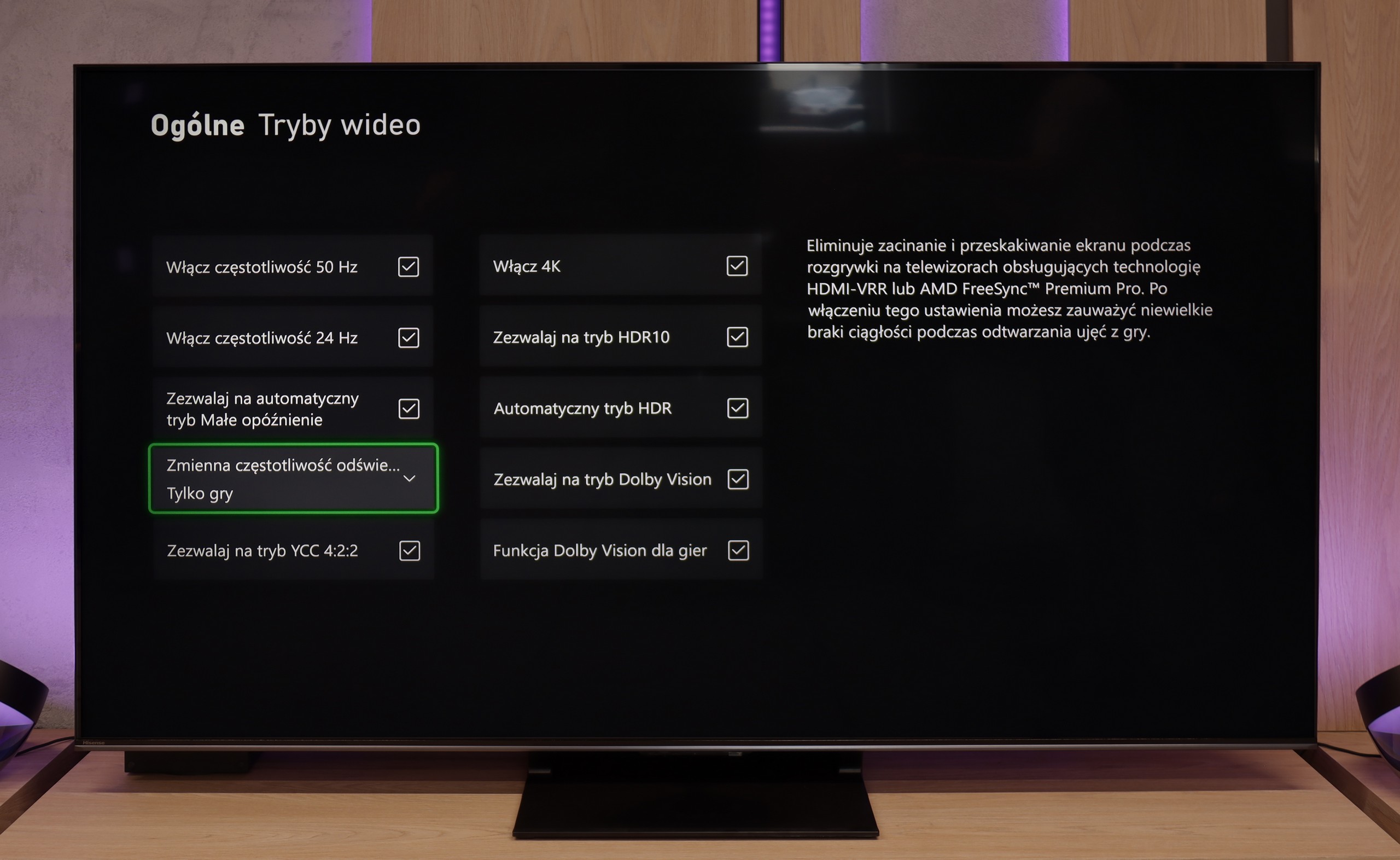



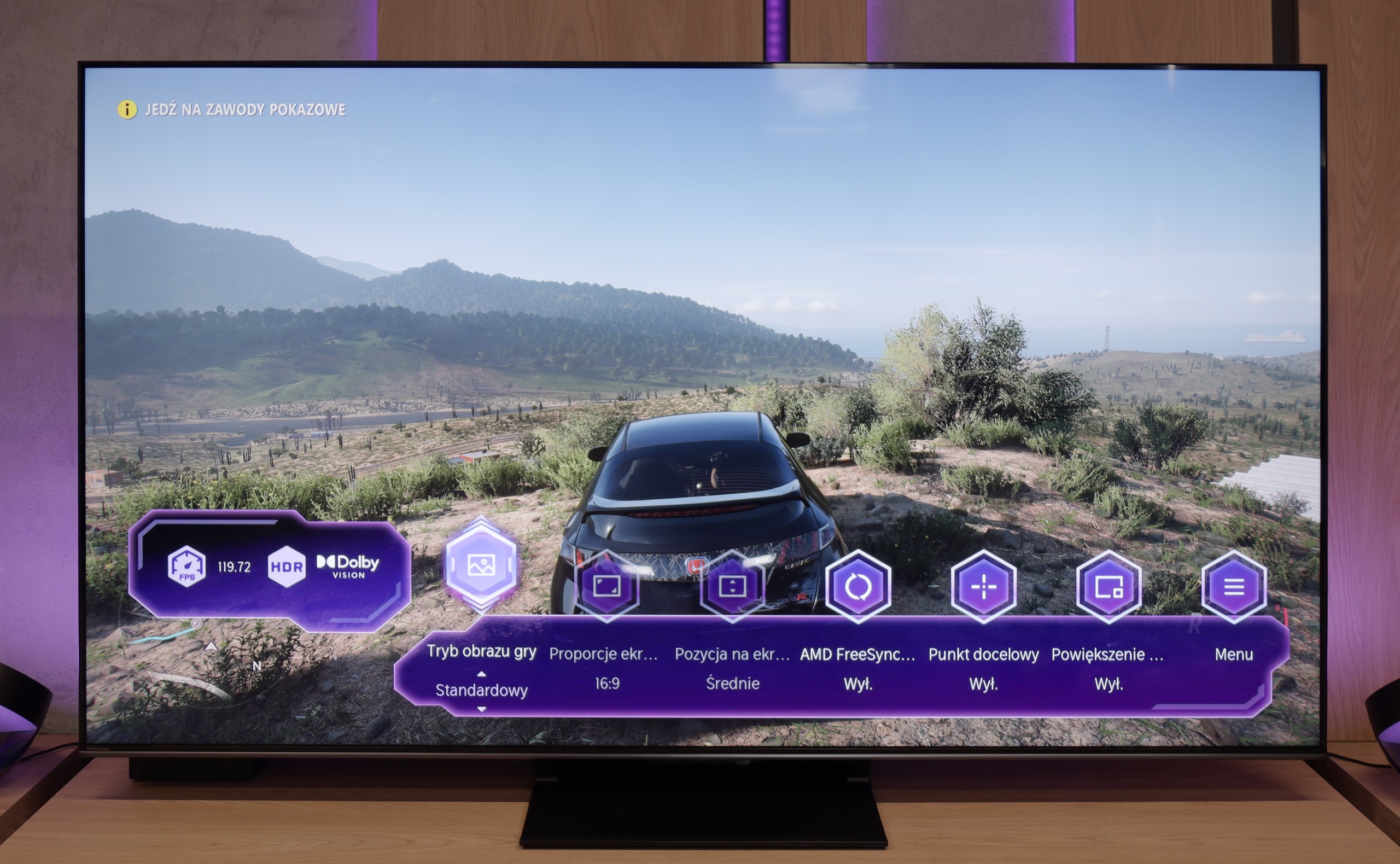

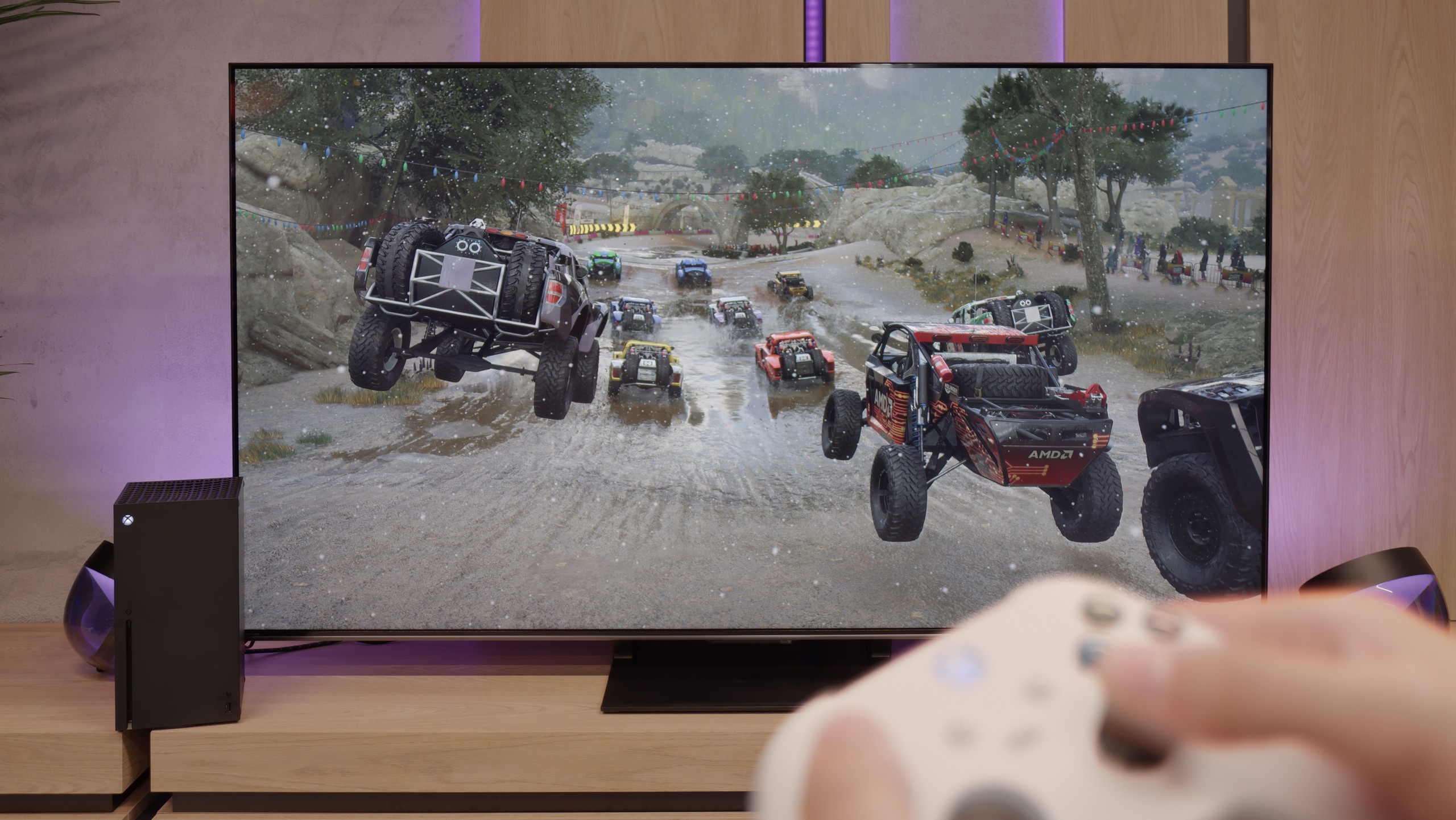
LG QNED offers a range of features that make it an excellent choice for gamers looking for a high-performance television. The TV is equipped with four HDMI 2.1 ports, allowing connection to the latest consoles like PlayStation 5 and Xbox Series X, utilising full functionality including Variable Refresh Rate (VRR) and Auto Low Latency Mode (ALLM). Thanks to the Game Bar feature, gamers can quickly and easily manage all game settings without needing to navigate complex menus. Parameters such as VRR, ALLM, Multi View, and frame rate monitoring can be adjusted. The TV also supports G-Sync and FreeSync technologies, which is particularly important for owners of Nvidia and AMD graphics cards. G-Sync and FreeSync synchronise the TV's refresh rate with the graphics card. The 120Hz panel guarantees incredible motion smoothness and image clarity. Combined with the Black Frame Insertion (BFI) feature, which is available at 60Hz and 120Hz, gamers can enjoy an even sharper and smoother picture. LG QNED87 is a television that meets the expectations of even the most demanding gamers, offering modern technologies and features that significantly enhance comfort and satisfaction during gaming.
Hisense U7Q PRO is a TV that seems to have been designed with gamers in mind. We have practically everything that can be expected from a gaming screen: variable refresh rate (VRR), automatic mode (ALLM), and as many as four HDMI 2.1b ports with full bandwidth of 48 Gb/s. Additionally, there’s a clear and quite functional Game Bar, as well as a well-implemented Dolby Vision GAMING mode that works seamlessly with Xbox Series S and X consoles.
Sounds like the ideal? Well, almost. Unfortunately, Hisense has still not implemented the HGiG feature, which is the system's tone mapping limitation on the TV's end. This means that when configuring HDR brightness on the console, we do it “by eye” or look for settings in online guides, as the screen does not display its actual brightness range. It’s a shame – because HGiG makes it easier to match the console to the TV and helps avoid overexposed or too dark scenes in HDR games.
Fortunately, the other elements work very well. Input lag is low, responsiveness is excellent, and the handling of other features is faultless. And although not everything worked perfectly, the U7Q PRO can still be confidently recommended to gamers.
Input lag
9.9/10
9.8/10
SDR
HDR
Dolby Vision
The LG QNED stands out with an extremely low input lag, which is crucial for smooth and responsive gaming. For a refresh rate of 120Hz, the input lag values do not exceed 6 ms, while at 60Hz, the input lag is a maximum of 15 ms. These are truly impressive results that ensure a player's reactions are almost instantaneously reflected on the screen.
In terms of signal delay, the Hisense U7Q PRO performs exceptionally well. For 120 Hz content, the input lag stays below 10 ms, which translates to a lightning-fast response – the screen almost instantly reacts to our movements, something console and PC gamers will particularly appreciate. With 60 Hz content, the situation looks a bit worse, as the response time doubles – this is natural and applies to virtually all televisions. Nevertheless, it still remains below 20 ms, which can be confidently regarded as a very good result, almost close to perfection – and in practice, it’s hard to feel this during gaming.
Compatibility with PC
7.6/10
8.2/10

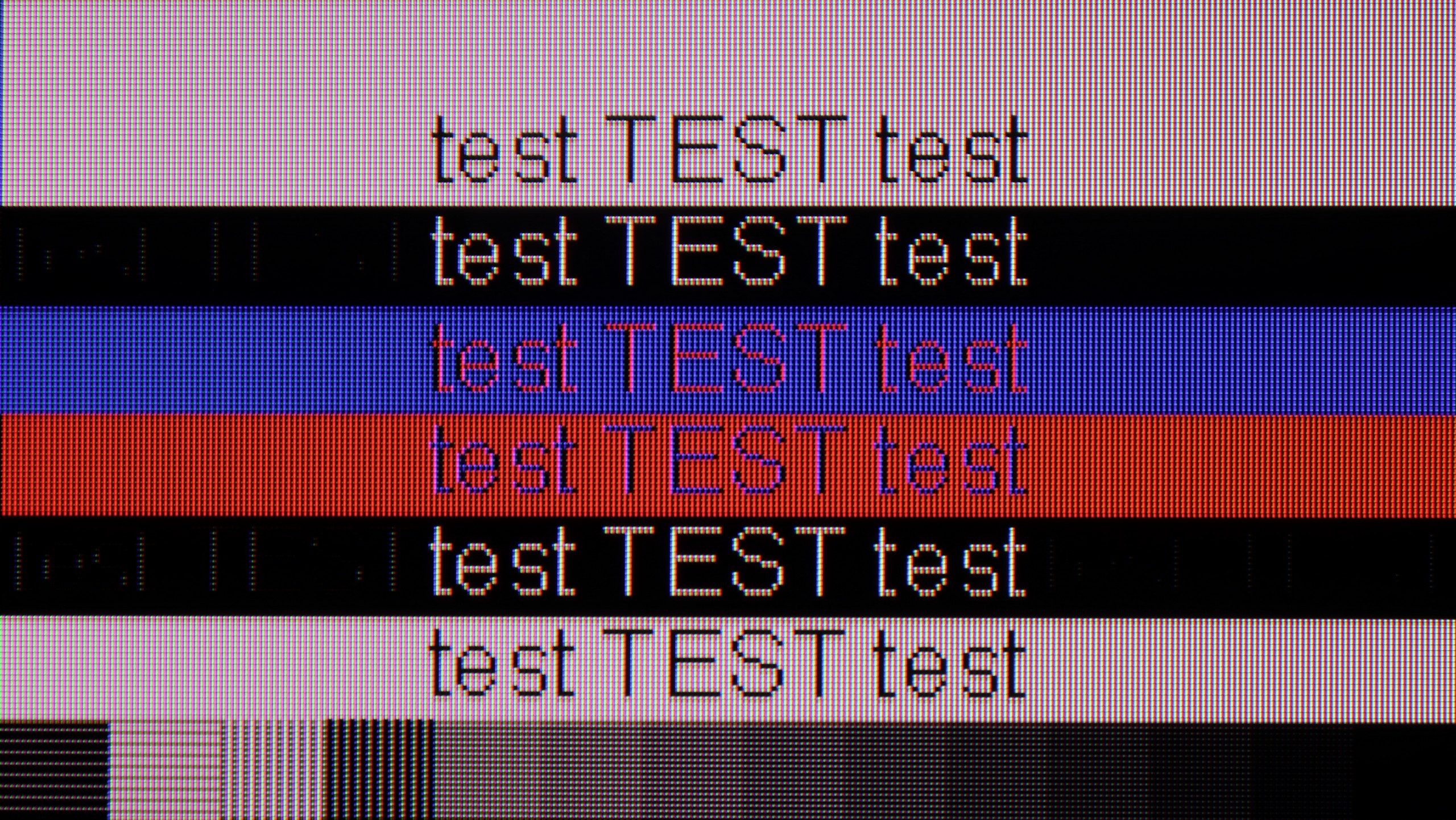
The LG QNED television works perfectly with a computer, offering very good font readability. This makes working and browsing content exceptionally comfortable. The high refresh rate of 120Hz provides a smooth and vivid image. It combines a large workspace with performance, making it a genuine pleasure to use. However, for more demanding users, it may be disappointing that the TV has issues displaying fonts on a dark background. Instead of white letters, they take on a greenish hue.
Playing on a PC with the Hisense U7Q PRO is pure fun. Low input lag, a full 165 Hz in 4K and even 288 Hz in Full HD – these are numbers we wouldn't expect from a TV at this price. In this regard, it's really hard to nitpick. If someone is looking for a large screen for gaming from a PC – the U7Q PRO can confidently serve as a monitor. It performs a bit worse for everyday text work. Although chroma 4:4:4 is present, so theoretically, everything should look good. But in practice, grey text on a dark background looks strange – vertical lines are sharp, but horizontal ones can blur, disappear, or look slightly dimmed. However, it's fair to add that if you use the TV as usual – that is, from a few metres away – you're unlikely to notice this. The issue only becomes apparent when someone places the U7Q PRO on a desk, a metre from their face, and starts working with text or spreadsheets. If you plan to use it in this way – it’s worth keeping this in mind.
Viewing angles
7.1/10
3/10
When it comes to viewing angles, LG QNED87 performs really well. Thanks to its IPS panel, it offers wide viewing angles compared to VA panels. This means that the picture remains clear and does not lose quality even at an angle. While it may not achieve the perfect results of OLED TVs, which maintain colours and brightness regardless of the viewing angle, in terms of LCD QNED87 screens, it stands out positively. This makes it a great choice for larger rooms where viewers often watch at an angle.
In this regard, the U7Q PRO performs averagely. The television is equipped with a VA panel, which is not known for its wide viewing angles. When you start looking at the screen at an angle, the image clearly loses brightness and the colours start to fade. This is a completely normal phenomenon in VA panels without additional coatings to widen the angles – so if you plan to watch from the side or with a larger group, it's worth keeping this in mind. On the other hand, head-on – the image looks great, with deep blacks and very good contrast, much better than on IPS/ADS panels.
TV efficiency during daytime
4.8/10
6.2/10




Matrix brightness
Average luminance SDR
Hisense U7Q PRO: 472 cd/m2
LG QNED87T6B: 428 cd/m2
During the day, the LG QNED television performs adequately. It has a satin finish that doesn’t suppress reflections the best, which can be noticeable in bright rooms. Nevertheless, with quite good brightness at 430 nits, the image remains visible and clear. Although reflections may be somewhat bothersome, the brightness of the television allows for comfortable use during the day.
As we mentioned earlier – the U7Q PRO is a really bright TV, especially when it comes to HDR content. For SDR materials, the TV dims a bit, but an average brightness level of around 500 nits is still a very solid result. This means you can easily watch TV or movies even in quite a bright room. Only under very extreme lighting – like direct strong sunlight on the screen – can visibility suffer a bit. Fortunately, Hisense has applied a satin anti-reflective coating that effectively reduces reflections, and the blacks maintain their depth even during the day. This makes a difference and allows for comfortable use of the TV in various lighting conditions.
Details about the matrix
Subpixel Structure:

Panel uniformity:

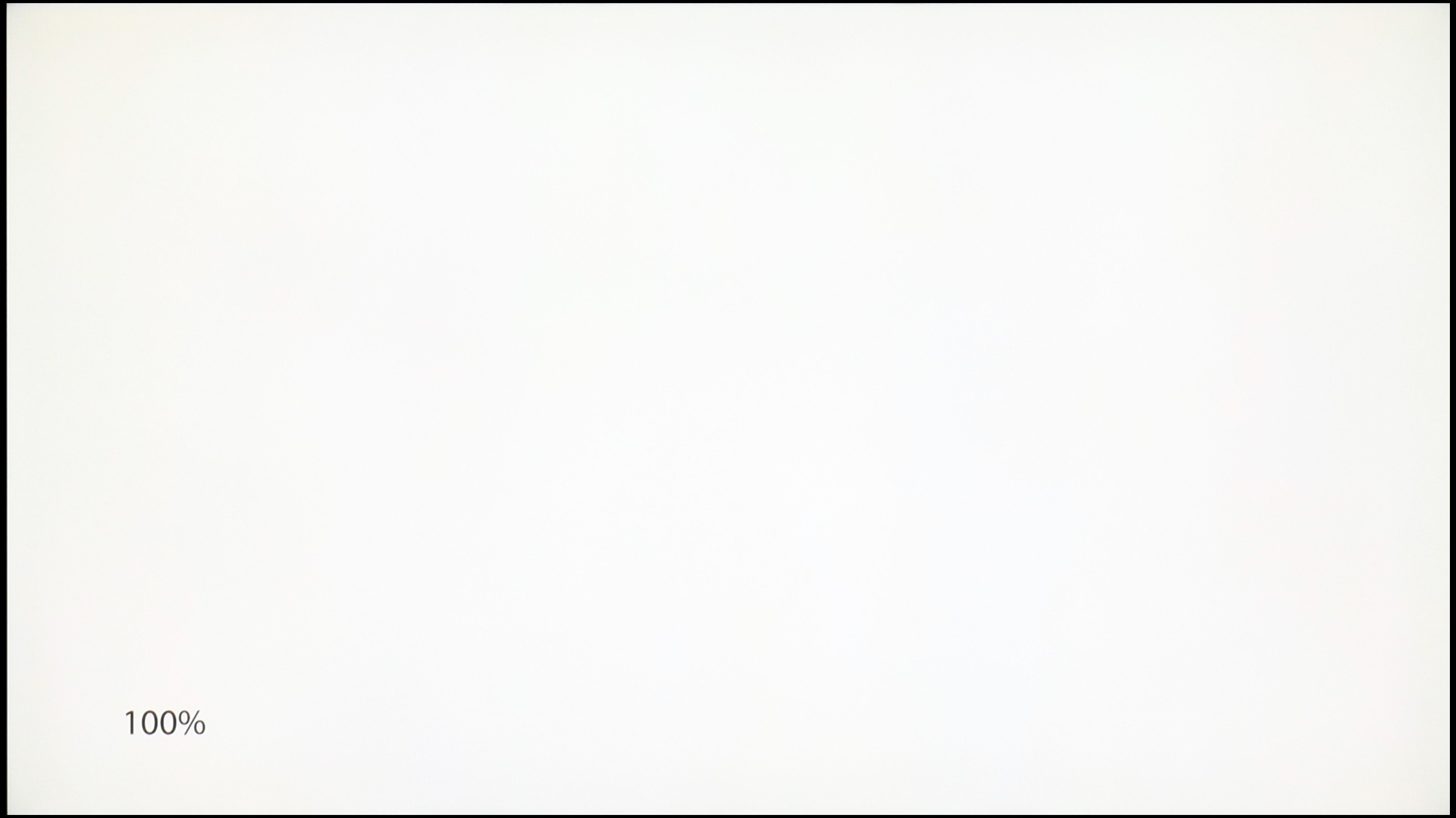
LG QNED87T6B
Hisense U7Q PRO
TV features
9.5/10
9.5/10
- HDMI inputs0 x HDMI 2.0, 4 x HDMI 2.1 48Gbps0 x HDMI 2.0, 4 x HDMI 2.1 48Gbps
- Other inputsRCA (Chinch)
- OutputsToslink (Optical audio), eARC (HDMI), ARC (HDMI)Toslink (Optical audio), eARC (HDMI), ARC (HDMI), Mini-Jack (Headphones)
- Network InterfacesWi-Fi 2.4GHz, Wi-Fi 5GHz, Ethernet (LAN) 100MbpsWi-Fi 2.4GHz, Wi-Fi 5GHz, Ethernet (LAN) 100Mbps
- TV receptionDVB-T, DVB-T2, DVB-S, DVB-S2, DVB-CDVB-T, DVB-T2, DVB-S, DVB-S2, DVB-C
Classic features:
- Recording to USB (terrestrial TV)
- Recording programming
- Picture in Picture (PiP)
- RF remote control (no need to aim at the screen)
- Backlit remote control
- Teletext
- Audio only mode
- Possibility to connect Bluetooth headphones to the TV
- Possibility to simultaneously use Bluetooth headphones and the TV speaker
Smart features:
- AirPlay
- Screen mirroring (Windows Miracast)
- Wyszukiwanie głosowe
- Voice search in native language
- Ability to connect a keyboard and mouse


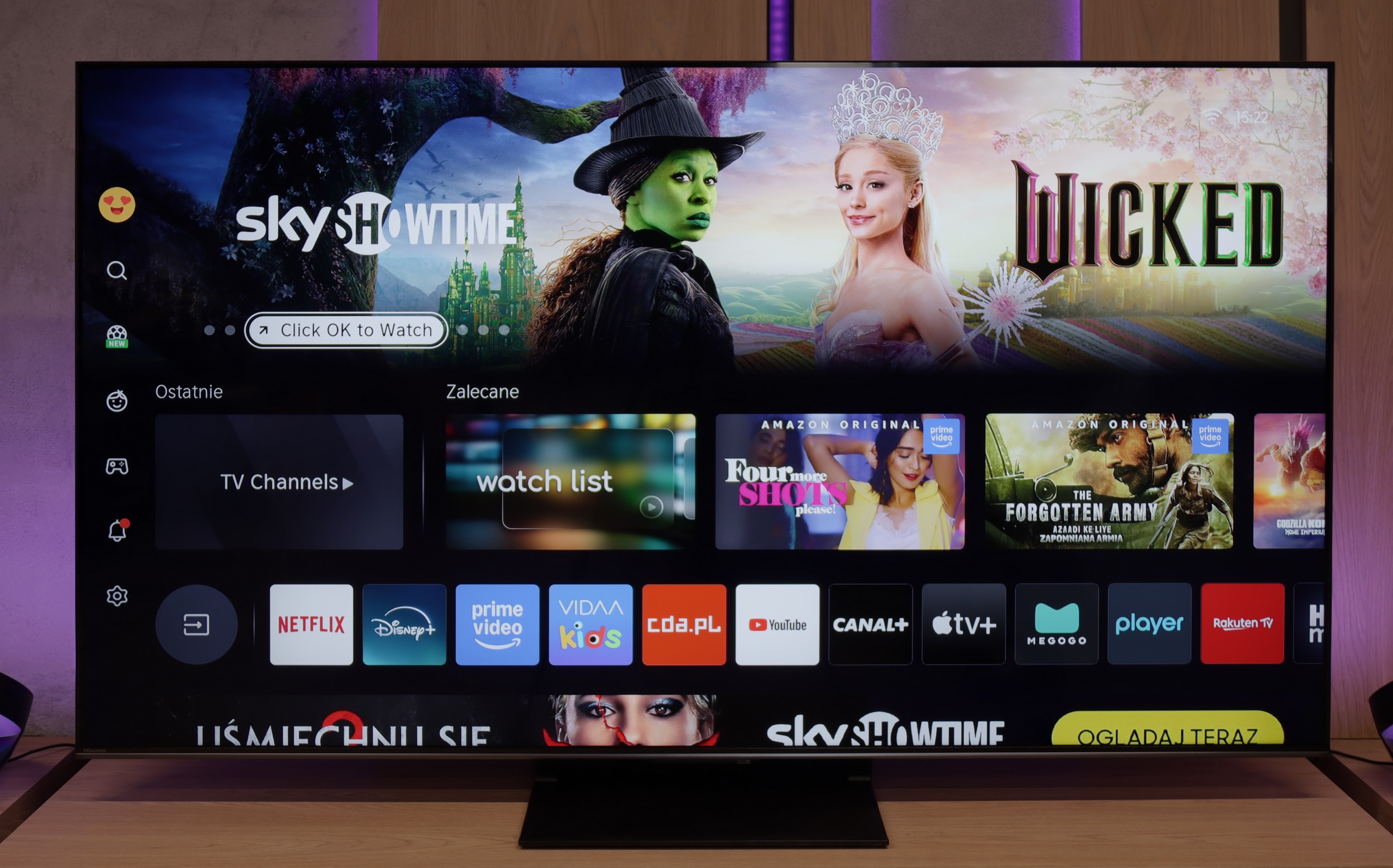
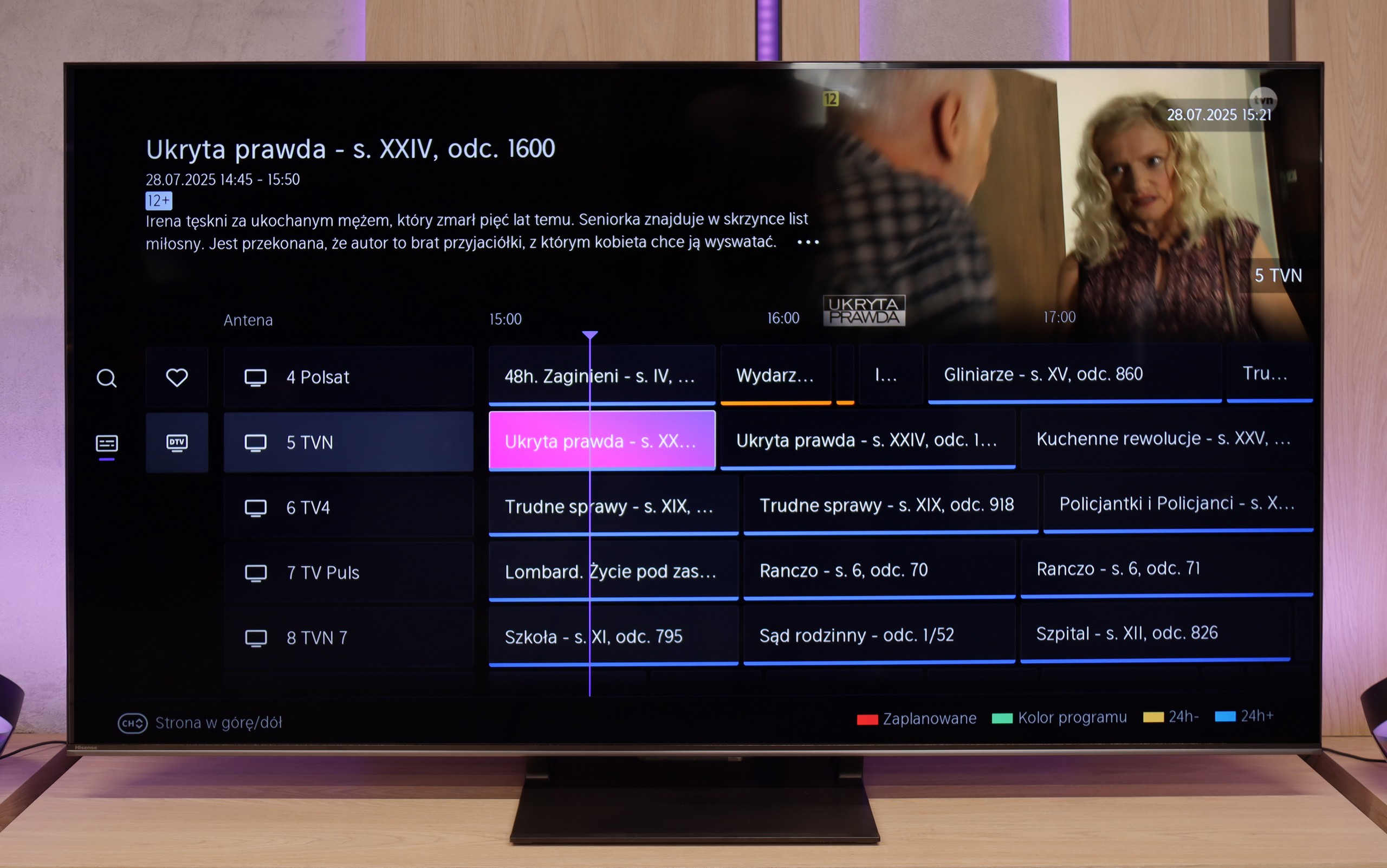
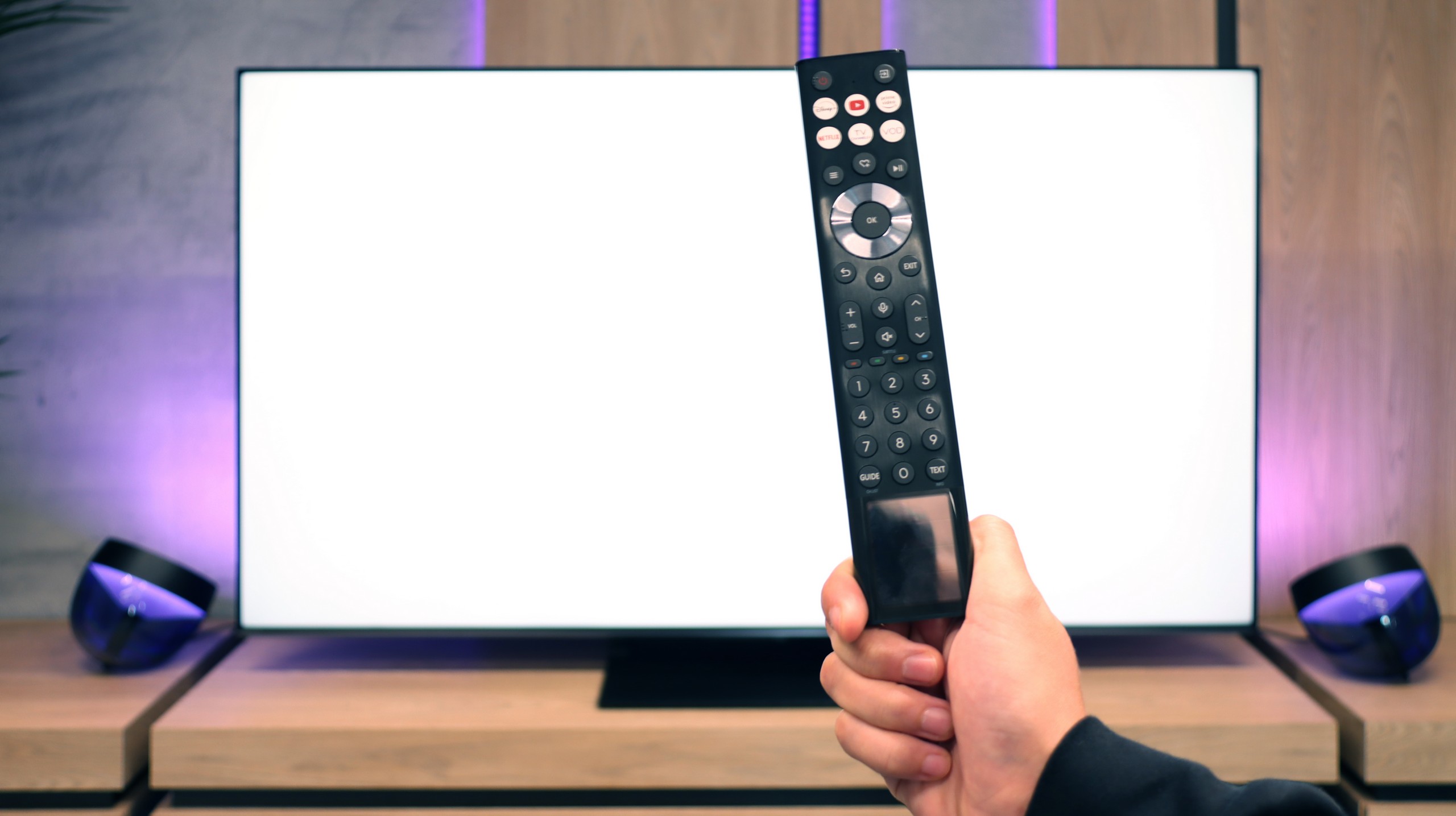

LG QNED87 TV offers a multitude of features that significantly enhance user comfort. Let's start with the WebOS system, which we believe has the most user-friendly interface among all TVs available on the market. One of its greatest advantages is the remote control with a built-in gyroscope, known as the Magic Remote. Thanks to this, navigation is intuitive and quick, making TV usage a pleasure. WebOS also supports a range of smart features that greatly simplify everyday use of the television. Among them is AirPlay, which allows easy content sharing from Apple devices such as iPhone or iPad. Additionally, the TV supports a wide range of streaming applications, such as Netflix, YouTube, Amazon Prime Video, and many others, providing access to favourite movies and series in one place. When it comes to everyday use, LG QNED87 does not disappoint. The TV offers a USB recording feature, which is becoming increasingly rare in modern models. This allows users to record their favourite programs and watch them at any time. Furthermore, the TV has a Picture-in-Picture (PIP) function, although only for one tuner, enabling the viewing of two programs simultaneously. Connecting additional devices via Bluetooth is simple and hassle-free. The TV supports various Bluetooth devices, such as mice, keyboards, and headphones, increasing its versatility and allowing easy personalisation of the user experience. With all these features, the LG QNED87 TV is a versatile and convenient device that meets the expectations of even the most demanding users.
Classic features of U7Q PRO
If you plan to use the television in a more "classic" way, that is, for watching daily programs or connecting headphones, the Hisense U7Q PRO has almost everything you could expect. The television easily supports recording to USB, you can connect headphones via Bluetooth, and the remote control is backlit, which is still not standard even in more expensive models. While many people today are foregoing these classic features in favour of streaming apps, it's good to know that the U7Q PRO still does this well and without compromises (aside from the lack of PiP functionality).
SmartTV System: Vidaa
When it comes to smart features, in Europe this model runs on the VIDAA system. The system operates smoothly, has a built-in web browser, supports voice control (also in Polish), and includes AirPlay, which will please users of Apple devices. However, it should be noted that VIDAA is a closed system, so you won't find all the popular apps that we've become accustomed to with Android TV or Google TV. Before purchasing, it's worth checking whether the apps you actually use are available.
Playing files from USB
8.2/10
8.2/10
Supported photo formats:
Maximum photo resolution:

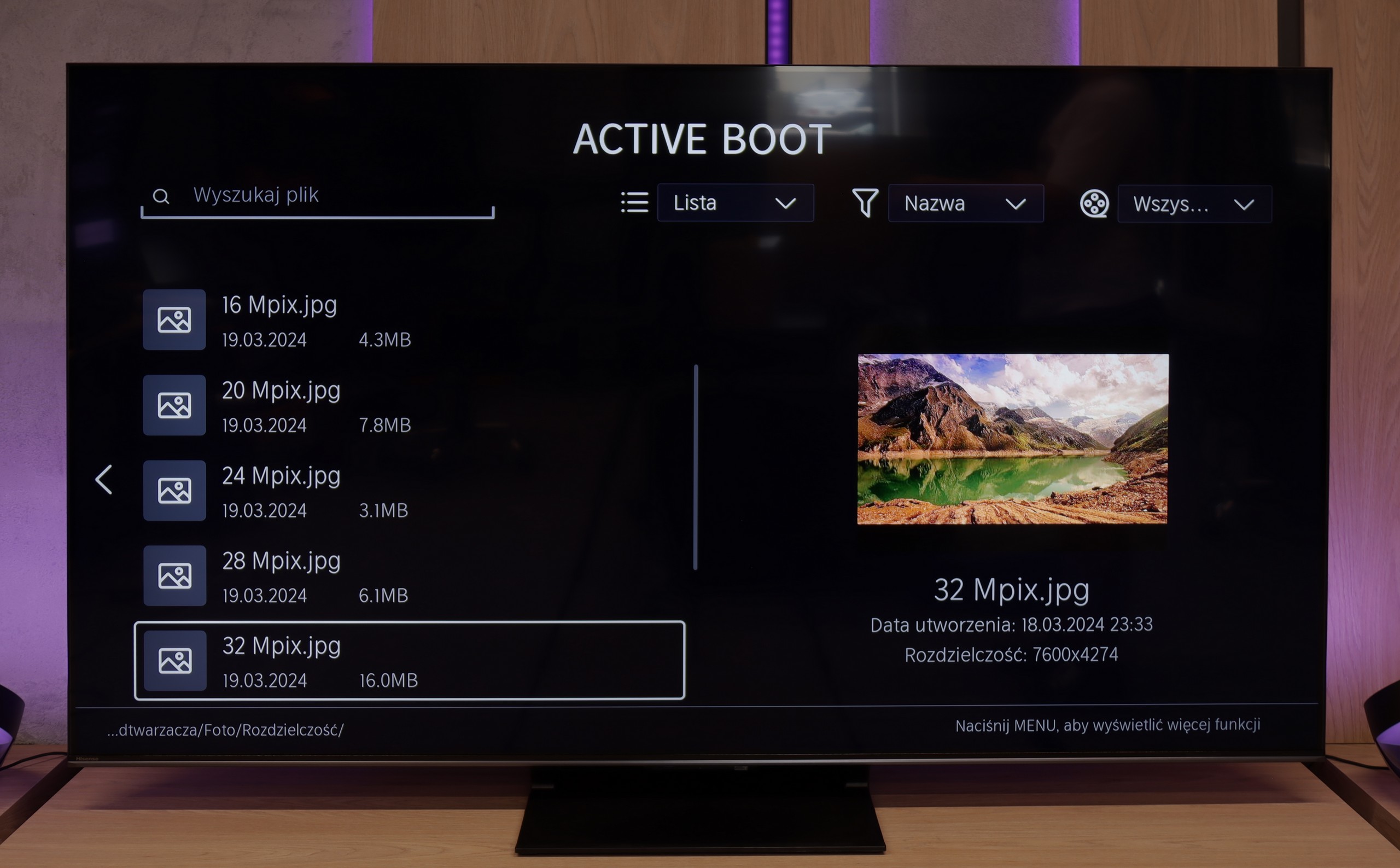
The built-in media player in the LG QNED87 television should not disappoint anyone. It offers rich capabilities when it comes to playing video and audio files. It supports many popular formats, ensuring versatility and user convenience. The only drawback might be the limited number of supported photo formats. However, this mainly concerns those less popular formats, so most users should be satisfied with the player's functionality. For everyday use and typical multimedia formats, the player performs very well.
The built-in media player in the VIDAA system worked very efficiently and seamlessly on our U7Q PRO unit. The television had no trouble reading external video and audio files, as well as subtitles, making it convenient to watch movies from a USB drive or external hard drive. Most popular formats worked flawlessly, so there was no need to convert anything. The only complaint is a certain selectiveness in handling high-resolution images – not all of them opened. Therefore, you will find a detailed list of supported image resolutions (Mpix) in our comparison table.
Apps
8/10
7.7/10














































Sound
6/10
7.8/10
- Subjective sound quality:6/107.8/10
- Dolby Digital Plus 7.1:
- Dolby True HD 7.1:
- Dolby Atmos in Dolby Digital Plus (JOC):
- Dolby Atmos in Dolby True HD:
- DTS:X in DTS-HD MA:
- DTS-HD Master Audio:
When it comes to sound, it can be said that it's moderately pleasant. There's a lack of pronounced bass, and the mid tones seem a bit unclear. This isn't an ideal situation for audiophiles, but it's worth noting that the television plays DTS files without any issues. This is a feature that's missing in many other televisions, so the LG QNED87 deserves praise for this support.
For built-in TV speakers, the U7Q PRO sounds surprisingly good. The audio is clear, with distinct mid and high tones, and while the bass is somewhat limited, it doesn’t completely disappear. One could say that for "TV speakers," the level is more than satisfactory. However, it’s worth noting that in our test unit, we couldn't play DTS:X audio from local files – the TV simply doesn’t support it. This means that if you’re counting on a cinematic surround effect solely from its built-in speakers, there might be a bit of a letdown. Thankfully, the TV seamlessly transmits DTS signals to an external amplifier, so if you have a home theatre – just connect it up and everything works as it should.


